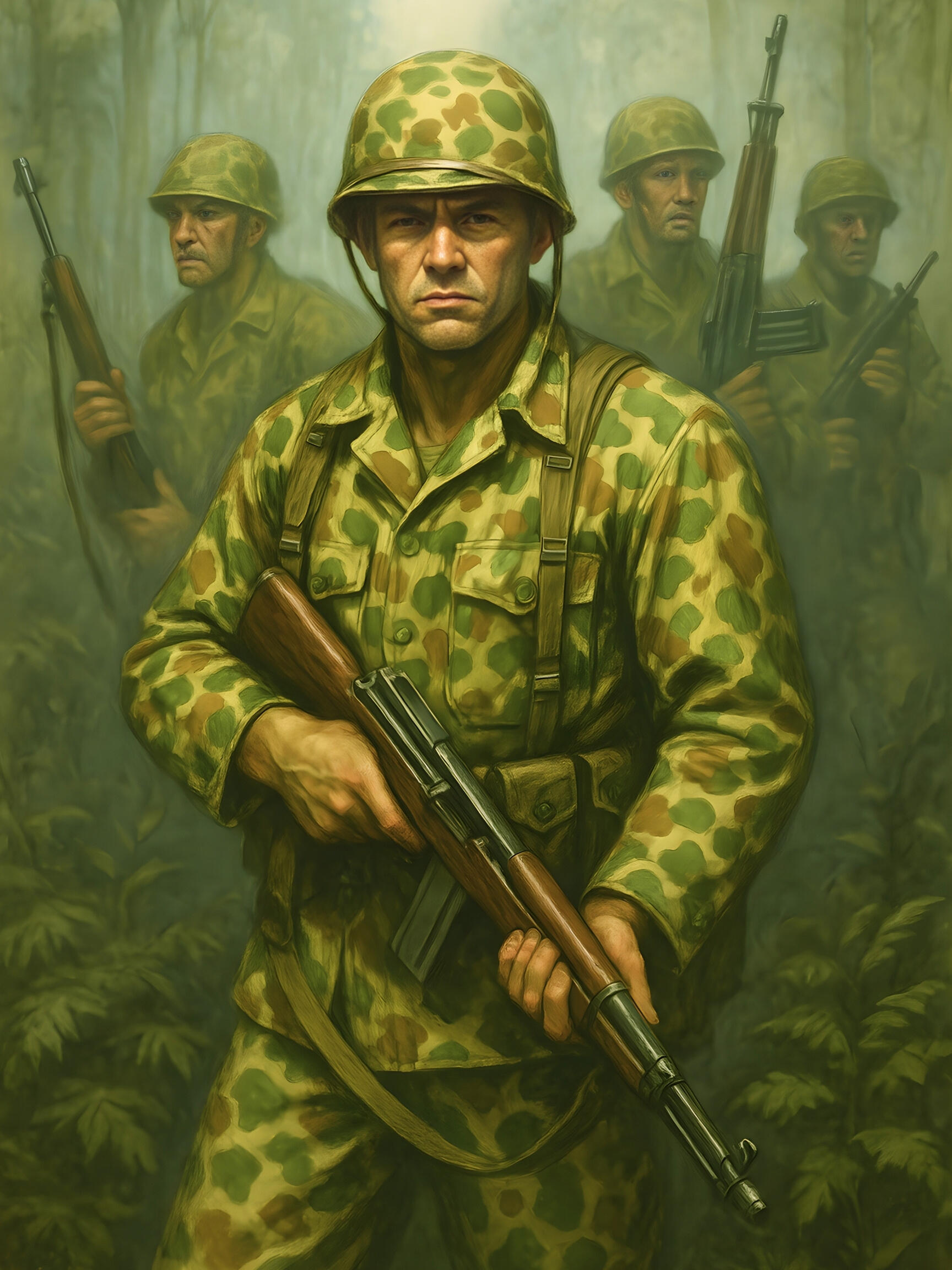"The Original American Camouflage Pattern"
Frog Skin Camouflage
Frog Skin, also known as “Duck Hunter,” was the U.S. military’s first true camouflage pattern, issued during WWII. Used by elite Marine Raiders in the Pacific and later adopted by hunters and special forces, Frog Skin became a visual symbol of raw grit and jungle warfare. Today, it lives on — respected by history buffs, tacticians, and fashion icons alike.
“You didn’t blend in. You disappeared.”— WWII Marine, Bougainville
History of Frog Skin Camouflage
Frog Skin camouflage, also known as “Duck Hunter” or “M1942 camouflage,” holds the distinction of being the first camouflage pattern issued to American armed forces. Developed during World War II, it was designed to provide concealment in dense jungle environments, particularly for U.S. Marines fighting in the Pacific Theater.The pattern features irregular green and brown spots on a tan or beige background, mimicking foliage and dappled sunlight. It was reversible, with a jungle green side and a beach tan side, allowing soldiers to adapt to different terrain. Issued in 1942, it saw action in campaigns such as Guadalcanal, Tarawa, and Bougainville, primarily worn by elite units like Marine Raiders and scouts/snipers.Despite its effectiveness in jungle warfare, Frog Skin was phased out by the end of the war, partly due to concerns that it resembled enemy camouflage and issues with friendly fire. However, it found new life post-war with military advisors in Vietnam, special forces, and eventually in the civilian hunting and fashion markets, where it became known as “Duck Hunter camo.”Today, Frog Skin is an iconic piece of military heritage, symbolizing innovation, adaptability, and the legacy of unconventional warriors who relied on stealth over numbers.
© camohq.com. All rights reserved.
